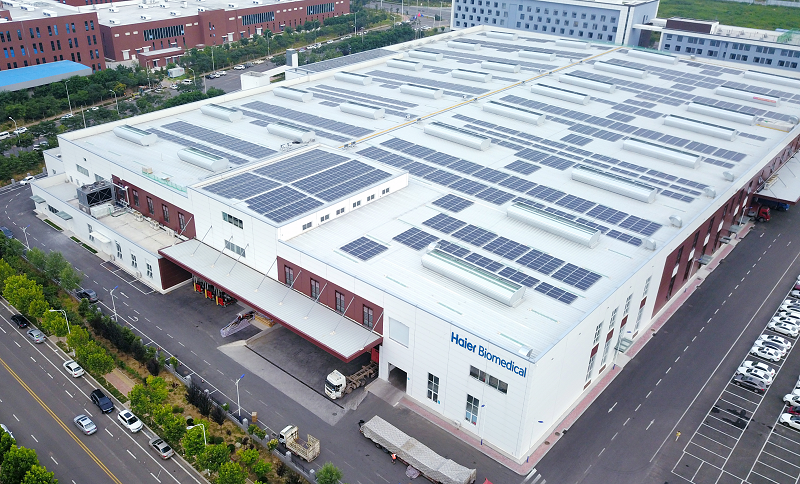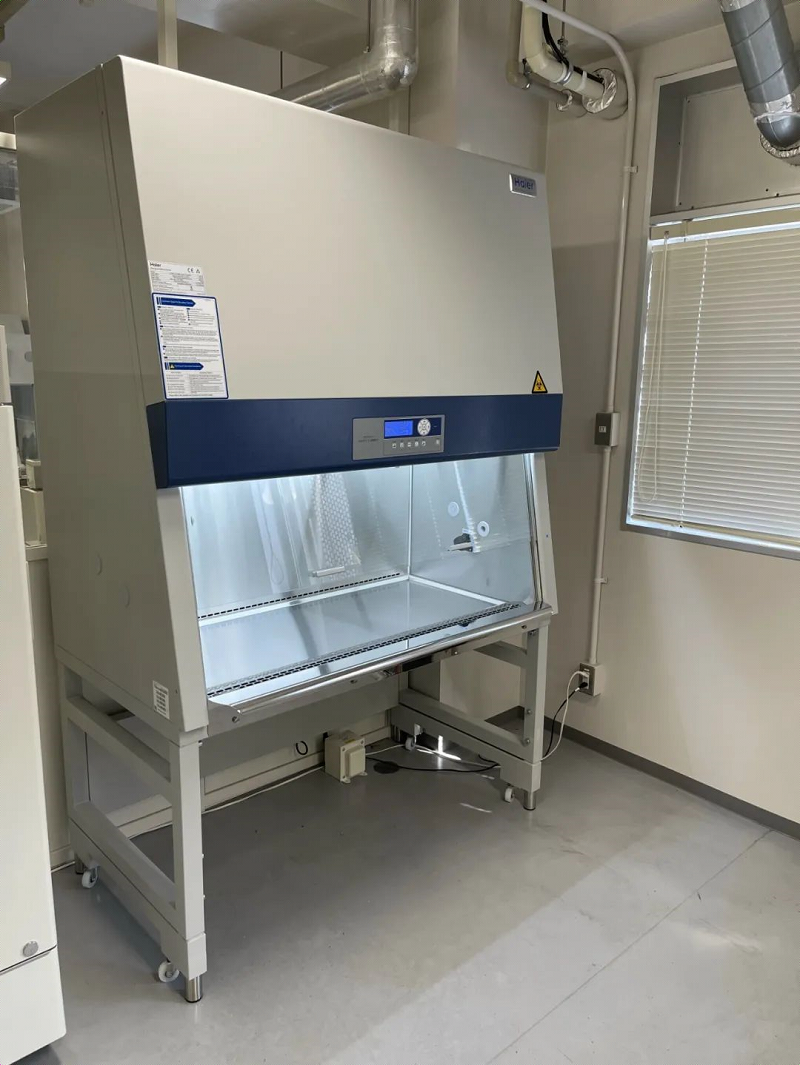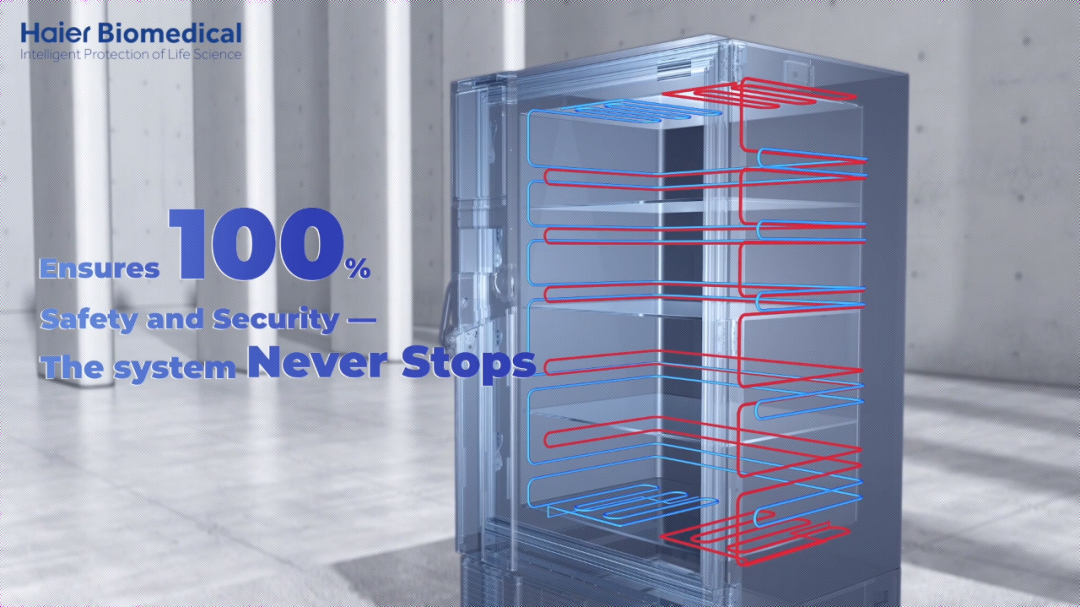Vertical Autoclave: Ensuring Safety and Security, Offering Convenience and Efficiency
During the late 17th century, microorganisms were unveiled to the world. It was not until the 19th century that modern science confirmed the existence of microorganisms, and it was gradually acknowledged that microorganisms were the root cause of food spoilage, infections, and diseases. As a result, there has been a growth of sterilization or disinfection methods based on modern microbiology, which has been used in diverse areas such as scientific research, teaching experiments, medical operations, and industrial production. Since then, the sterilizer has become one of the indispensable tools in many scientific experiments and medical procedures.

In 1679, French inventor Denis Papin created the steam digester, a device widely recognized as the predecessor to the autoclave. In 1879, building upon the principle established by Papin, Louis Pasteur and others developed the first modern autoclave. The Tsinghua University Science Museum currently houses an imported autoclave, manufactured in the United States, that holds a significant micro-history, as it was once used by Tao Baokai, a renowned civil engineering expert, during his tenure at Tsinghua University.
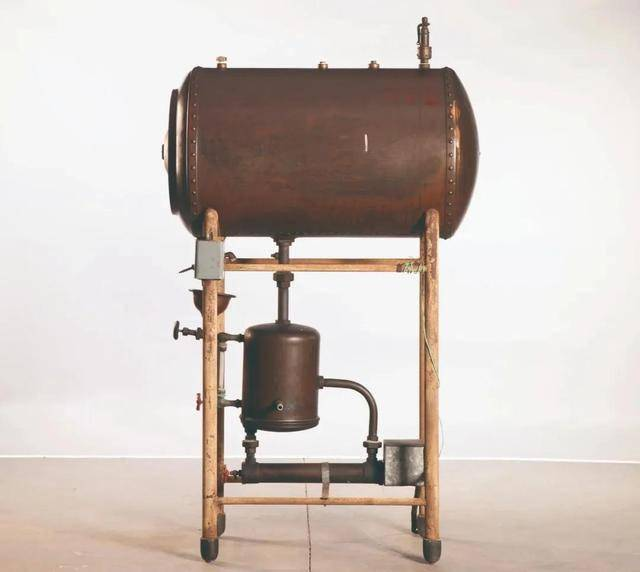
In light of the ever-changing development of science and technology, the autoclave sterilizer has undergone significant enhancements to adapt to the evolving times to become more intelligent, digitalized, and human-centered. For example, Haier Biomedical’s Vertical Autoclave is equipped with an automatic program that eliminates the need for manual operations and allows for direct drying within the sterilizer itself after the sterilization process, eliminating the need for transferring to the Drying Oven, which saves not only time but also effort. A member of a biological laboratory stated, “This Vertical Autoclave manufactured by Haier Biomedical boasts an automatic control program that is hassle-free and allows lab personnel to focus more on their experiments throughout the entire process.”
This Vertical Autoclave is designed for uses in a wide range of medical research fields, such as in laboratories, operating rooms, and disease control centers, for the sterilization of precision instruments and glassware, the preparation of media, and the sterilization of biohazardous products and waste, making it one of the most widely used products in relevant industries today.
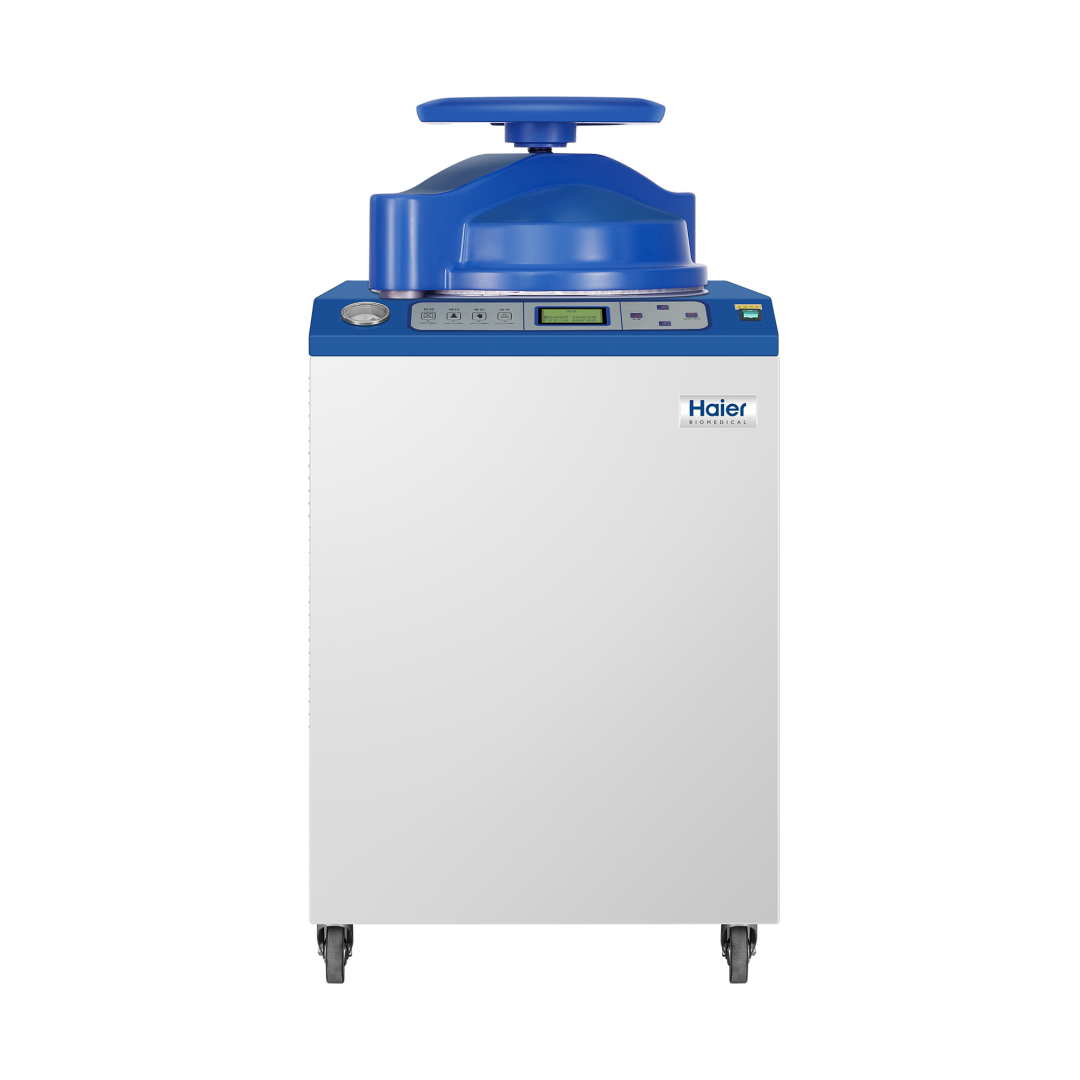
NO.1 One-click Startup Program
Haier Biomedical’s Vertical Autoclave is equipped with quick programs for instruments, dressings, rubbers, and liquids that can be initiated with a simple click of a button, ensuring quick and easy operations. Users can also effortlessly control various processes, including water filling, heating, venting, sterilizing, pressure relief, draining, and drying, at a click of a button.
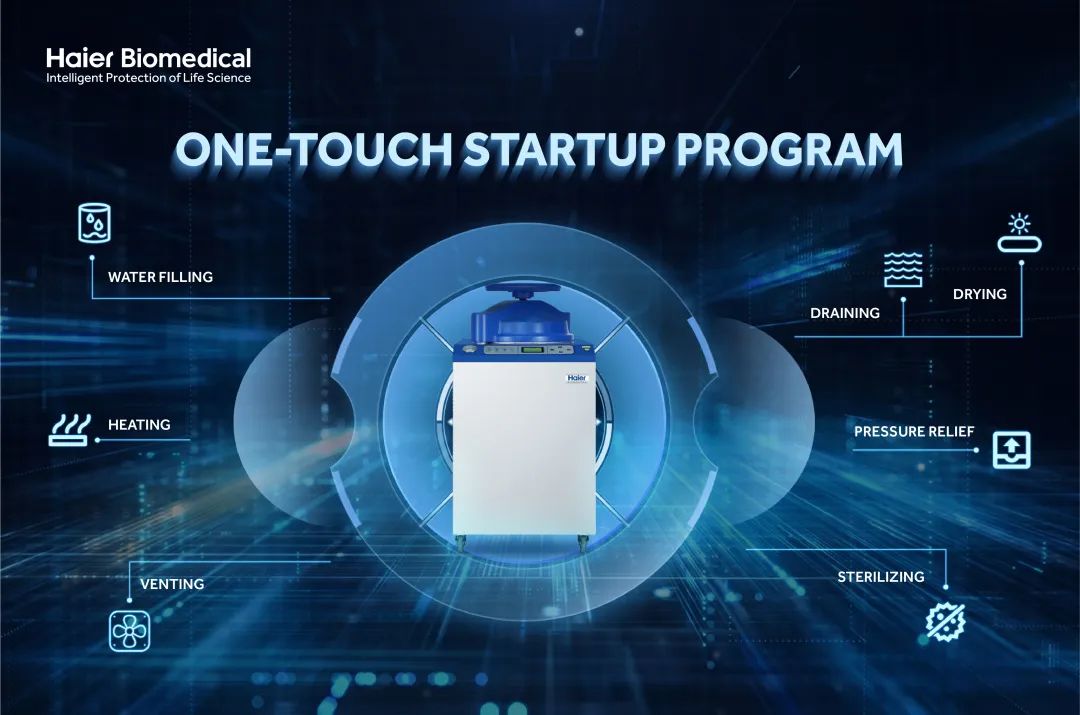
NO.2 Two Types of Pressure Relief
The Vertical Autoclave offers users the option to select between two pressure relief methods: fast pressure relief and slow pressure relief. The latter prevents liquid spillage due to sudden increases in pressure, ensuring the safety of samples and the personnel involved.
NO.3 Warm-up Control and Timed Start
The Vertical Autoclave is equipped with a preheating control function that aids in the heating process, which shortens the heating time required and improves the efficiency of experiments. It is also equipped with a timed start function, allowing for the automatic initiation of the sterilization procedure at a predetermined time and the performance of the experiments at the corresponding time.
NO.4 Multiple Exhaust Methods
The Vertical Autoclave has a variety of exhaust methods, including constant temperature exhaust, dynamic exhaust, and whole process exhaust, which can completely eliminate cold air within the equipment and improve steam saturation to ensure effective sterilization.
In addition, the upgraded Vertical Autoclave boasts seven safety protection capabilities, which enable it to efficiently and conveniently carry out extermination tasks on the premise that personnel safety is ensured. These capabilities include:
Overpressure and automatic pressure relief: When the pressure within the Vertical Autoclave exceeds the predetermined threshold, its safety valve will automatically open to release the excess pressure.
Sensor disconnection detection: The equipment is able to monitor the functioning of the sensor in real time to prevent any abnormalities in the sensor, which could potentially result in high temperature and pose a danger to users.
Anti-drying protection: When the water level is too low, the autoclave will automatically cut off the power supply, halt equipment operation, and trigger the alarm.
Insulated door cover for complete protection: The door cover is made of high-performance insulating material to keep the cover door cool at all times.
Standard overcurrent, overvoltage, and earth leakage protection.
Automatic over-temperature protection: When the temperature within the equipment exceeds the predetermined threshold, the system will automatically cut off the power supply and trigger the alarm.
Machine cover for safety protection: The equipment has a real-time detection system that can determine whether the equipment cover is securely closed. If the cover is not securely closed, there will be a prompt, and it will not allow for the sterilization process to commence. Only when the cover is securely closed will the sterilization process begin. However, if there is pressure within the equipment, the sealing door will become inoperable to prevent potential hazards arising from steam leakage.
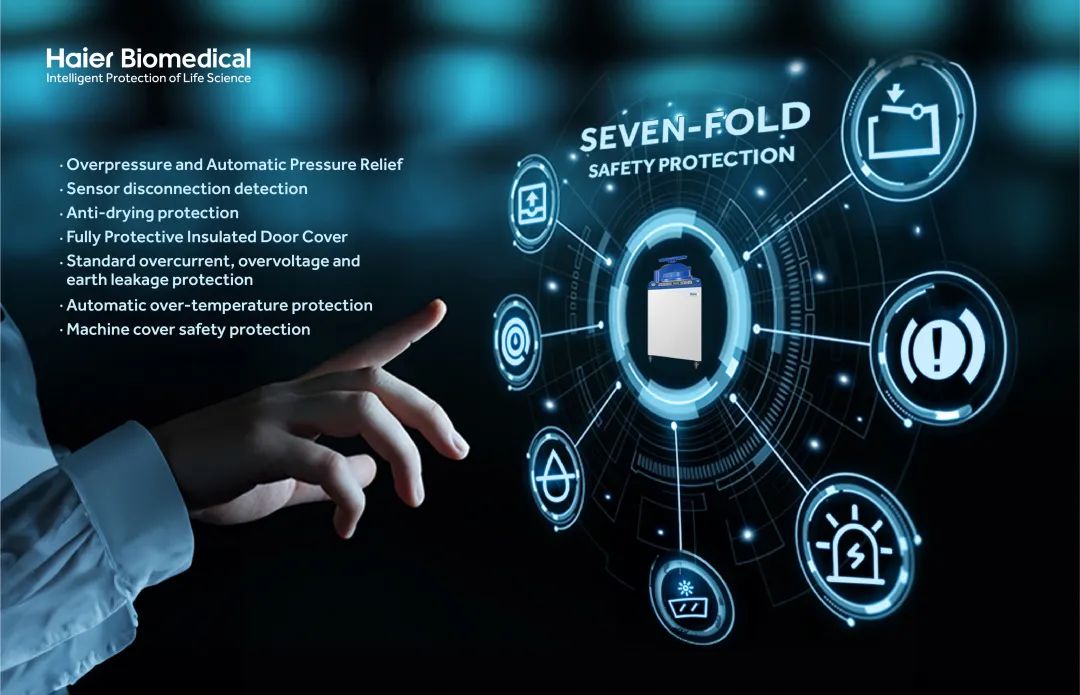
In the ever-evolving field of life science and technology, the Vertical Autoclave has played a crucial role in advancing sterilization services. Haier Biomedical has always remained committed to prioritizing user experience, keeping up with the industry’s innovative trends, establishing a global sales network, and consistently deepens its “product + service” model to meet the needs of global users. The company has also continuously made efforts in scenario and service modernization, fueled the advancement of life sciences with innovations, and provided users with customized services. Haier Biomedical will continue to invest in technology and promote innovative research and development, broaden its product categories, and introduce a wider range of products to deliver more of its quality products worldwide to make life better through the intelligent protection of life science.















.png)











